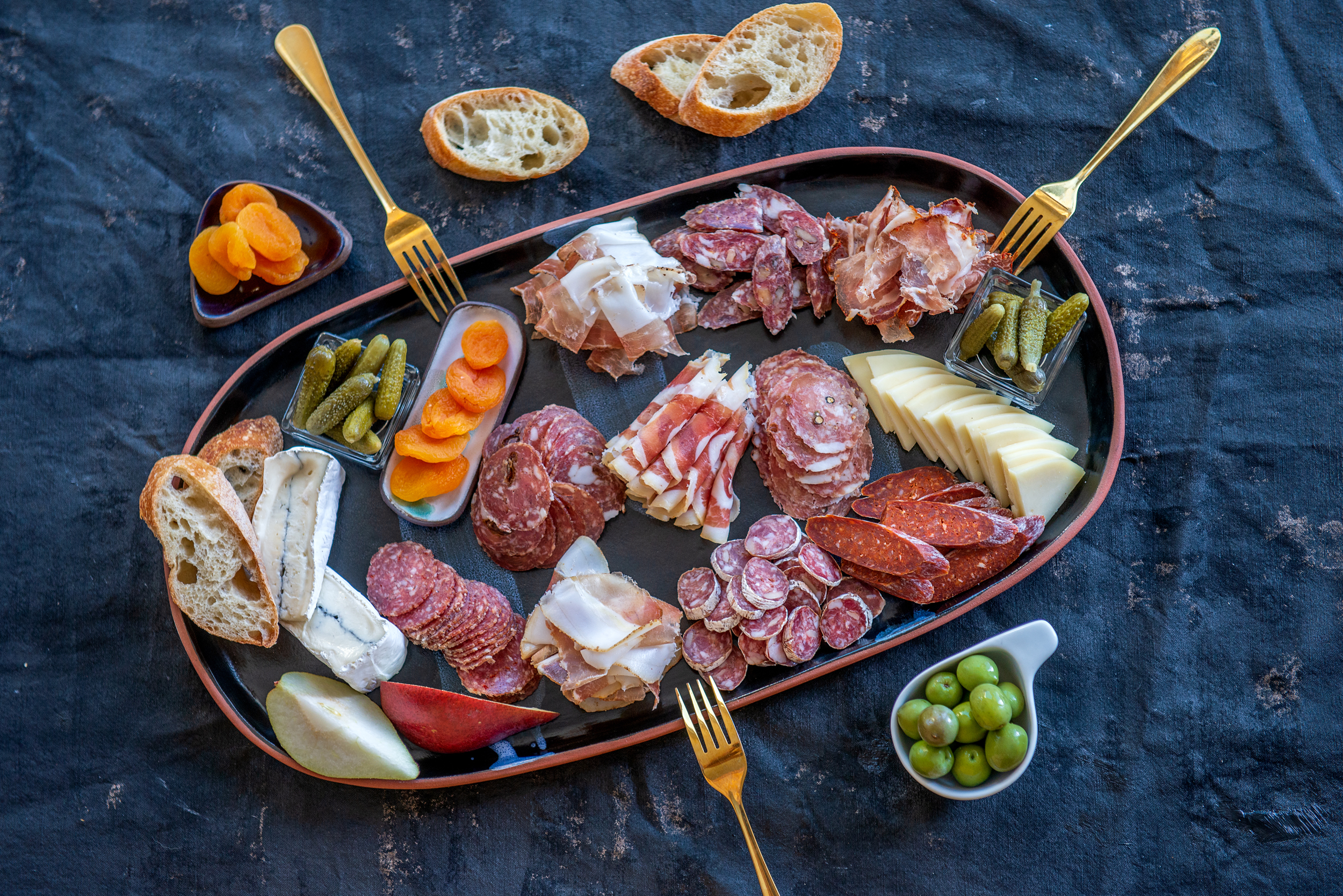Celebrating with Charcuterie
Celebrating with friends and family over the holiday season is often a series of unexpected visits and spontaneous gatherings—the perfect excuse for easy, crowd-pleasing hors d’oeuvres.
While a simple cheese platter may be an obvious choice, we love the sophistication and earthy combination of flavours in a traditional charcuterie board. Every bit as easy to pull together, a good charcuterie platter is a feast for the senses, satisfying the eyes and the taste buds with an array of delectables.
The key elements? Harmony and variety. Everything else is a matter of personal taste. Those two characteristics, harmony and variety, apply to the shape and texture of the platter’s components as well as to the flavours. In other words, visual appeal is as important as anything else.
Traditional charcuterie is true food craftsmanship, the art of turning preserved food into items of beauty and taste. Its focus is primarily on meat and displaying it using a variety of textures, flavours and techniques—from soft pâté to firm salami to complex galantine. And while cheese is not traditionally part of a charcuterie board, it pairs well with the meat and beautifully rounds out the board.
 Curating a Local Charcuterie Board
Curating a Local Charcuterie Board
The best meat platters have a little bit of everything. What's "everything"?
Cured Sausages and Salami: There are many different styles of salami, with some of the most common being soppresata from Italy, chorizo from Spain, and saucisson sec from France. A quality butcher shop will have plenty of options when it comes to cured, hard sausage. We like to mix it up with complementary and contrasting flavors.
Prosciutto: Prosciutto is a fatty cut of meat that’s cured in salt and hung to dry over several months. It is usually made from pork, but cured lamb, duck or other meats that undergo the same process can also be considered a type of prosciutto.
Whole-Muscle Cuts: Whole-muscle cuts of meat are shaved into slices that can be thick (good for sandwiches) or paper-thin (a better choice for charcuterie boards).
Paté, Terrine, Rillettes, Mousse: Add a little textural intrigue to your assortment of cured sausage and meats with a paté, terrine, rillettes (with a coarser texture) or mousse (with a fine, silky texture). They can be made from just about anything, and served cold or at room temperature on top of toast or a cracker.
How much to buy: When fanned out, it doesn’t require a mountain of meat to create an impressive board. We usually allow about 60 grams per person. For an interesting-looking charcuterie board, choose at least five items that vary in colour, taste and texture.
What to serve with charcuterie: Once your charcuterie is nicely laid out, pair it with an assortment of complementary items. Crostini rubbed with olive oil and garlic is a great addition, crackers are no-fuss and usually on hand, and crispy breadsticks are great wrapped with thin pieces of cured meat. A spreadable chutney or jam is the perfect foil to fatty, salty meat, and you can't go wrong with a grainy mustard. Finish it off with some tangy pickles (such as cornichons), a combination of dried and fresh fruit and a few handfuls of nuts.
Add some cheese: Cheese and meat always work well together, so if you want an even more divine board, serve cheese with your charcuterie, too. We recommend two or three types—a soft or semi-soft cheese such as brie, camembert, gorgonzola or creamy goat, and a firm or hard type of cheese, such as an aged gouda, provolone or asiago, manchego or grana padano.
The basic goal of a charcuterie board is to create contrast between all of the different qualities in each morsel.
Where to Shop
A great butcher or specialty food shop is key to building a charcuterie board, and here on the Island we have an incredible assortment of local suppliers for meats, hand-crafted cheeses and local preserves. We've curated a Charcuterie Trail with a list of specialty charcuterie shops, butchers and cheese shops, so you can create your own beautiful charcuterie board for your next gathering.






